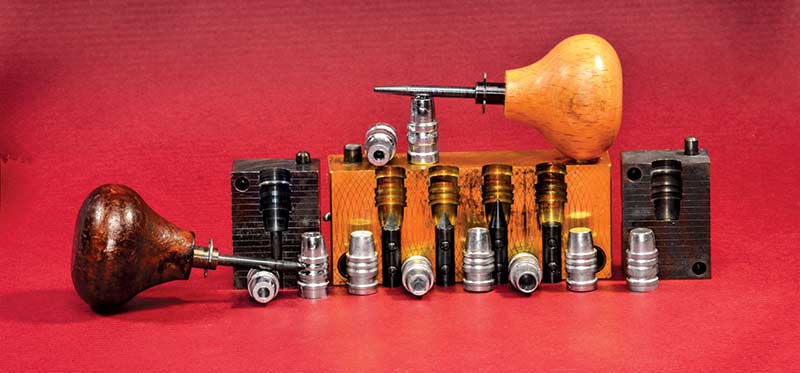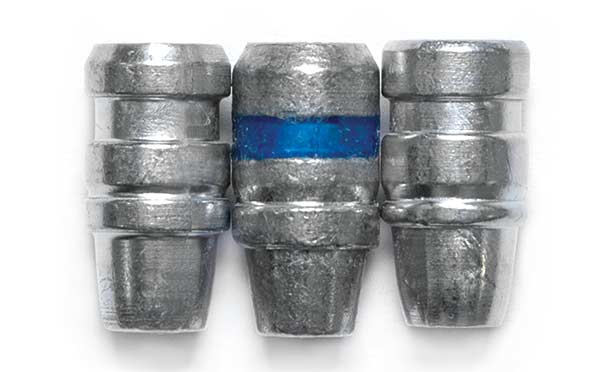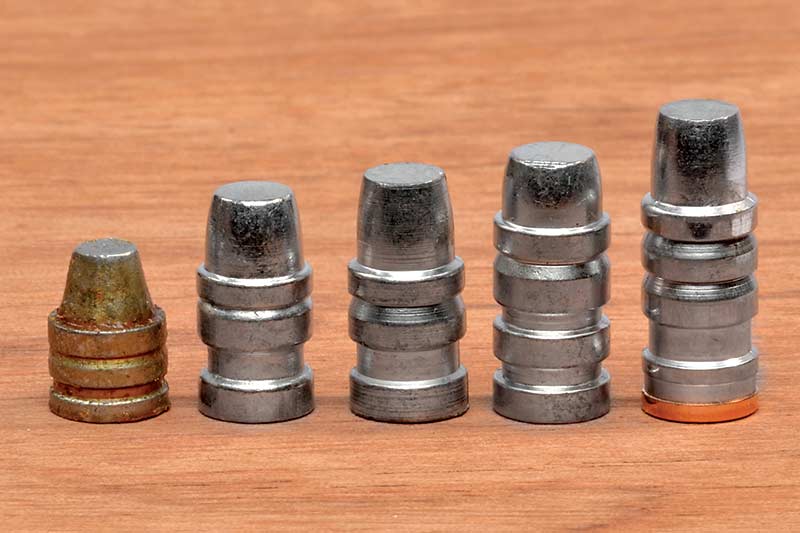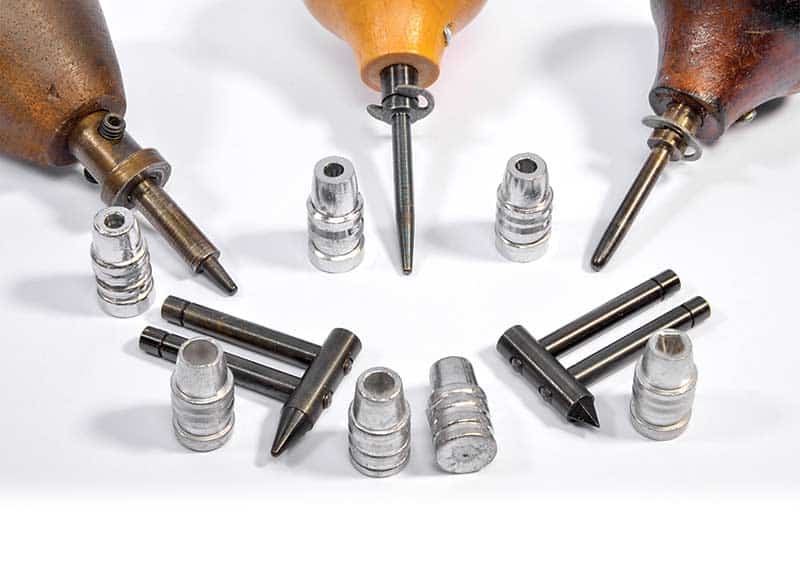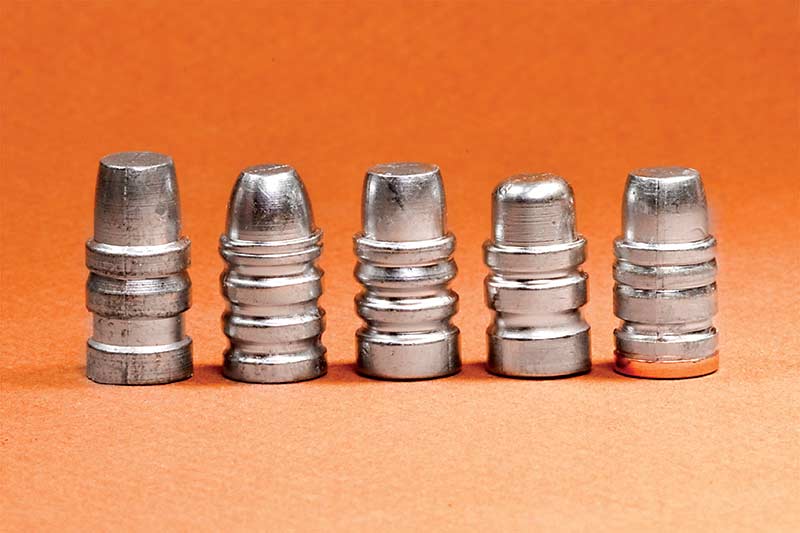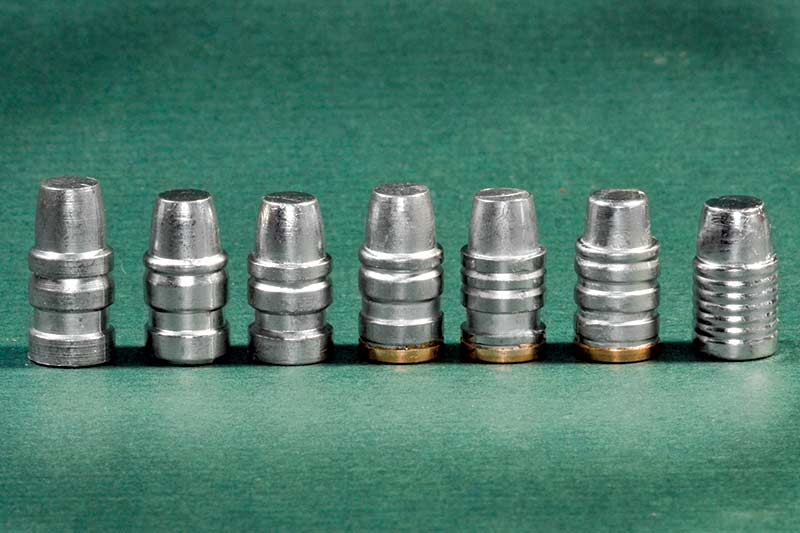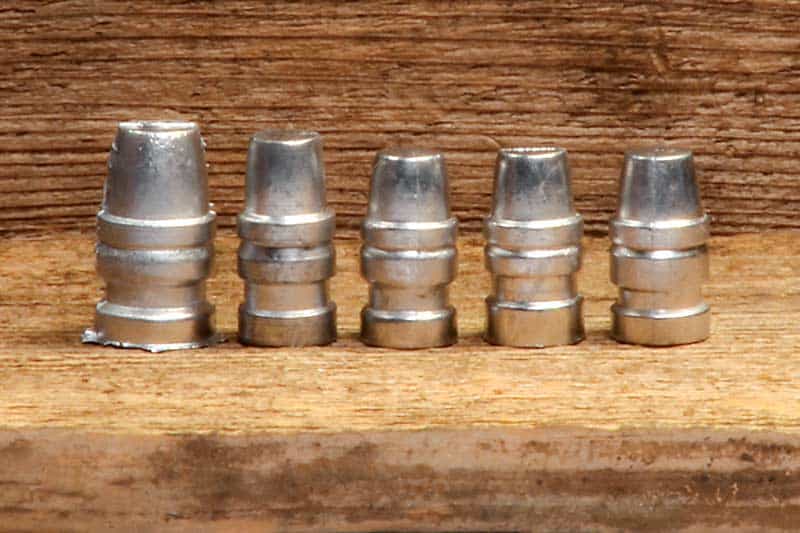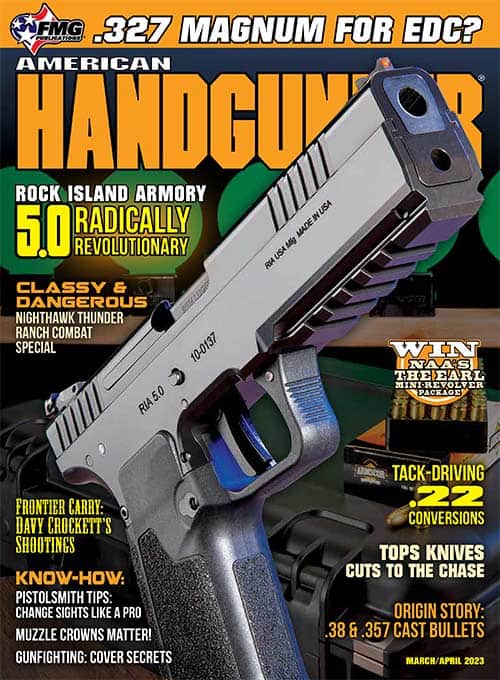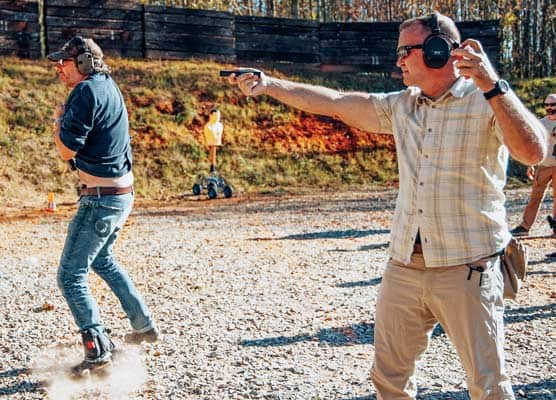.38 & .357 Cast Bullet Origin Story
A Brief History of Keith, Sharpe, and Mould Makers
When Elmer Keith decided to abandon the .45 Colt cartridge and concentrate on bringing the 1/8″ shorter and sadly underpowered .44 Special up to its full potential, his first problem was the lack of a suitable cast bullet design. He never claimed to have invented the semi-wadcutter bullet design but rather modified and developed it to its full potential.
On page 229 of his book “Sixguns” (1955, 1961) and in his autobiography “Hell I Was There!” (1979), he provides a brief synopsis of the first two unsatisfactory designs of his own in custom-made Belding & Mull molds. Lessons learned, Elmer then worked out a new design in 1927 that he sent to Lyman, which was reviving the old Ideal line of unvented single cavity bullet “moulds,” as they spelled it.
Elmer’s Design Specs
He had six basic parameters in mind: First, second and third were a flat nose for maximum straight-ahead tissue crushing without deflecting like a roundnose, a sharp-edged full-diameter, wide wadcutter-type hole-cutting front band and equal-width middle and base bands. The wide/thick front band was to help align the bullet in the barrel’s forcing cone and the same size rear band prevented gas cutting and barrel leading.
Fourth, a deep crimp groove was deemed essential to prevent recoil jumping and also to retard bullet movement long enough to assist the complete combustion of smokeless powders. Fifth, a deep, flat-bottomed lube groove was considered necessary to hold sufficient grease to prevent leading at the velocities he envisioned. Finally, it needed a radiused rather than a straight-sided truncated cone nose shape to make it more aerodynamic and accurate at long ranges.
A Mr. Pickering at Lyman understood Keith’s sketches and requirements and turned them into design number 429421. It was a winner from the get-go.
Other Caliber Extensions
With that success, Keith used the same principles to create a design for the .38 Special, followed by numbers 452423 and 454424 for the .45ACP/Autorim and .45 Colt, respectively. For some reason, he reduced the .421’s diameter to .358 but retained nearly the .421’s full length.
Keith admired the .38 Special’s accuracy but disdained its round-nose bullet design and lack of power, so he sat on his own bullet design for it for a couple of years. After S&W introduced the more powerful .38/44 police cartridge in the fixed-sight Heavy Duty revolver in April 1930 and the Outdoorsman with adjustable sights in November 1931 to handle the cartridge, Keith’s 358429 showed up in Lyman’s 1932 Ideal Handbook No. 30.
Elmer intended 358429 for use only with heavy powder charges in revolvers with big cylinders for .44 and .45 cartridges bored for the smaller .38 Special. Standard bullet weight for the .38 Special has been 158 grains since its introduction in 1902. Elmer’s 358429 weighs 173 grains and does not shoot to the same point of aim as 158-grain bullets without serious experimentation with powder charges. Elmer never intended it to. His idea was to jack up pressures and velocities to very impressive levels in those S&W guns with thick-walled cylinders and adjustable sights, and did he ever succeed!
Never, ever use his old .38/44 loads for the balloon head cases. Never use his loads for solid head cases in anything other than an S&W Heavy Duty or Outdoorsman, a Colt Single Action Army or New Service, or a gun chambered for the .357 Magnum.
Hollowpoint
Elmer quickly learned 173 grains was a bit much. Instead of designing a shorter, lighter bullet, he created a 160-grain hollowpoint version, 358439, which also expanded spectacularly, and another 160-grainer, the 358431 hollowbase version. He strongly advocated either of those two as superior to the heavier original.
Later, Lyman
Lyman’s original mold-cutting cherries for his bullets soon wore out, and they bastardized his designs with their replacement cherries. Thoroughly disgusted, Keith turned to George Hensley, who was making excellent vented multi-cavity molds. Hensley’s #43 was his faithful reproduction of Elmer’s 358429 design.
Elmer’s original 358429 and new #43 bullets and his even more powerful-than-factory .38/44 loads impressed Daniel B. Wesson at S&W. Keith sent him 200 of his bullets and his load information to work with. But Wesson wanted still more power. The introduction of Hercules 2400 powder in 1932 finally made both Keith’s famous high-powered .38/44 loads and the .357 Magnum possible.
Competition
Unknown to salty, rough-around-the-edges outfitter, guide, rancher, cowboy Keith living 30 rutted dirt-and-mud road miles from town in Idaho, Wesson was also working with another advocate of a souped-up .38 back east: urbane and sophisticated Philip B. Sharpe.
While Keith was hauling ditch water to the house, cutting and splitting wood for heating and cooking, and reading by kerosene lamps, college-educated Sharpe enjoyed indoor plumbing while he worked with Winchester and Remington and with the DuPont and Hercules powder companies. He conducted over 100 experiments with various powders and bullets using their chronographs and pressure testing facilities.
Wesson redesigned and strengthened the .38/44 to handle the still higher pressures he had in mind. He and Winchester decided to lengthen the .38’s case a bit more than 1/8″ to prevent its use in .38 Special revolvers. In his book Complete Guide to Handloading (1937, 1941, pages 292–294), Sharpe acknowledged Keith’s bullet “is ballistically one of the best-shaped bullets on the market.”
But it was too long for the new Magnum cartridge case in the S&W, about which Keith was kept totally in the dark. If he had simply scaled the 0.775″ long 429421 bullet down proportionally to 0.358″, it would have come out at 0.647″ long instead of 0.742″, and everything would have been just fine.
So, Sharpe modified Keith’s design to make a 0.690″ long 156-grain solid bullet and a 146-grain hollowpoint cast in vented molds by Hensley with up to six cavities as design number 51. In all his testing, Sharpe couldn’t come up with a better bullet than a shortened modification of Keith’s bullet. Eventually, Winchester took over the .357’s development, cutting Remington and Sharpe out.
In his 10 books and hundreds of articles, Keith never even acknowledges Sharpe’s existence, even though in later years, they were both staff writers at the same time for the American Rifleman. In an undated staff photo, the two men are posed far apart.
Unloved Stepchild
For unfathomable reasons of their own, Winchester modified Sharpe’s bullet to the point neither he nor Keith (when he finally saw it) approved of it. Soft-swaged, it became a remarkable and commercially successful load anyway, even though Sharpe’s much harder cast bullet delivered better accuracy without the atrocious barrel leading.
Industry Adoption
The Cramer Bullet Mould Company started around 1937, making nice multi-cavity vented molds, including their 158-grain #26 for the .38/.357. Lachmiller got into the loading tool business in 1952, offering well-made two- and three-cavity vented molds in 1969, which included their 150-grain #358. Cramer and Lachmiller sold out to RCBS in the late 1970s, as did short-lived Ohaus.
SAECO’s history is pretty murky, but Redding now owns their reloading equipment line. They offer a plain-based .358 SWC #382, #388, which appears to be a bevel base version of the same thing and #393, a 162-grain gas-checked SWC.
Lyman dropped the ball when it came to a 158-grain semi-wadcutter bullet design of their own. First, in the 1936 Ideal Handbook #32, they offered their oddball/ridiculous 357443 mold with its all-wrong driving bands and nearly useless crimping groove.
Things got a bit better in 1939 when the 156-grain design 357446 showed up as the “Standard bullet for .357 Magnum” in #33. In the mid-1960s, Skeeter Skelton allowed as to how it was “sorta” okay, but not nearly as good as Ray Thompson’s very popular gas-checked, double-crimp-grooved 358156, which debuted in #40 in 1955.
Late to the party, the sensible 358477 showed up in the 41st edition of the Lyman Reloading Handbook in 1957. It sported Elmer’s three equal-width driving bands (well, almost) and a large rounded blunt instead of flat nose shape. It lacked the deep flat-bottomed lube groove, using a round bottom groove instead. If it weren’t for that, Elmer might have approved, sort of.
The change to his lube groove shape ticked Elmer off so thoroughly 20 or so years earlier he turned to H&G to make his mold designs and told readers about them and SAECO ever after. In recent years Lyman has finally been returning to the flat-bottomed lube grooves.
Besides the SAECO and Lyman designs, RCBS offers their plain based 38-150-SWC (originally called 38-150-KT for “Keith Type”) and gas-checked 358-158-SWC designs. Most commercial bullet casters today use Magma molds and casting machines. Magma offers three “Keith Style” molds, 38-145 FB, 38-150 SWC BB (bevel base) and 38-158 SWC BB.
Back in the day, Hoch, NEI, Yankee, Rapine and Modern-Bond also made highly regarded bullet molds that included copies, modifications, variations and permutations of Elmer’s designs. They all have disappeared as their owners aged out. H&G closed its doors in 1999. Cast bullet aficionados pay big money these days for those old cast iron molds.
Times change and beautiful CNC-machined brass and aluminum molds that are variations or copies of the classic and current .357/.358 SWCs are available today from Arsenal Molds, Accurate Molds, NOE Bullet Moulds, MP-Molds and probably others that have escaped my notice. Lee’s designs in aluminum molds are excellent.
Cast lead projectiles go back to the very beginnings of firearms. But no other cast bullet has a history as rich as the modern .357/.358 semi-wadcutter design.

